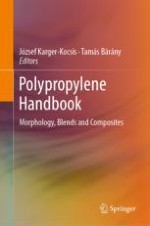2019 | OriginalPaper | Chapter
10. Foams
Authors : Tobias Standau, Volker Altstädt
Published in: Polypropylene Handbook
Publisher: Springer International Publishing
Activate our intelligent search to find suitable subject content or patents.
Select sections of text to find matching patents with Artificial Intelligence. powered by
Select sections of text to find additional relevant content using AI-assisted search. powered by
